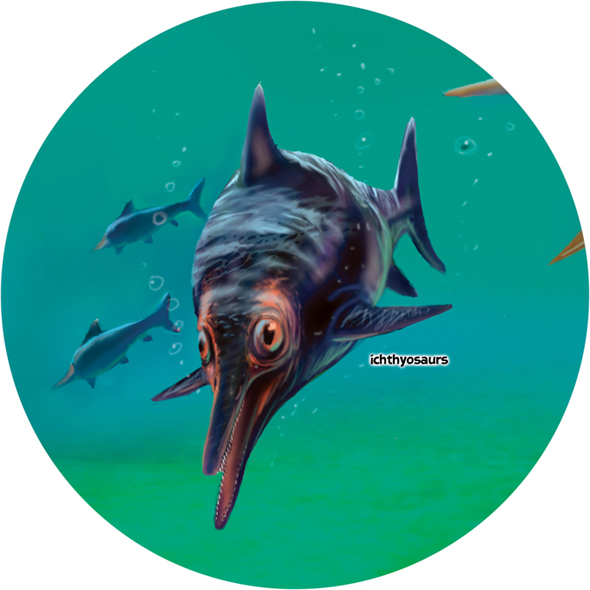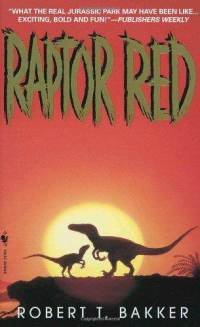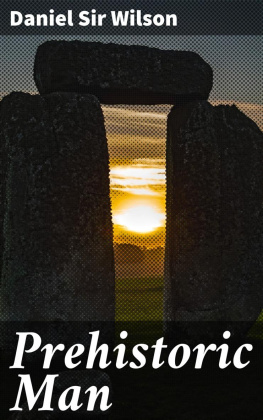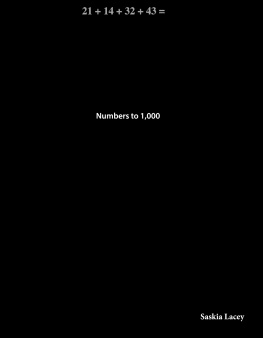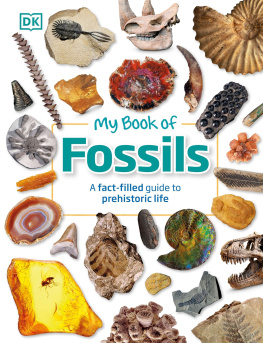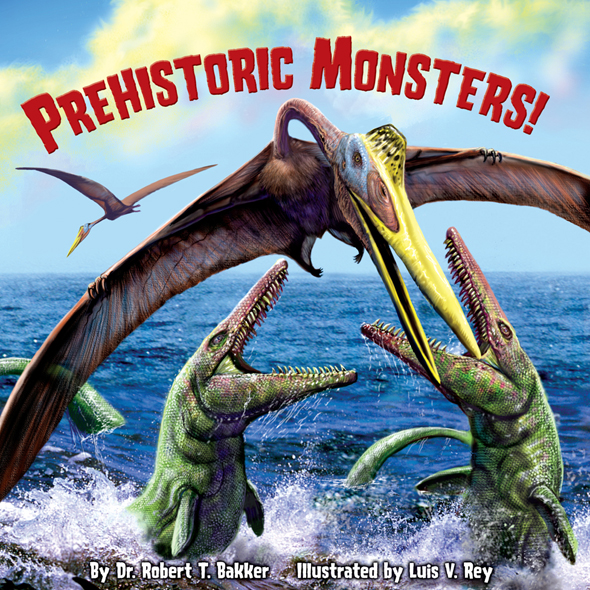
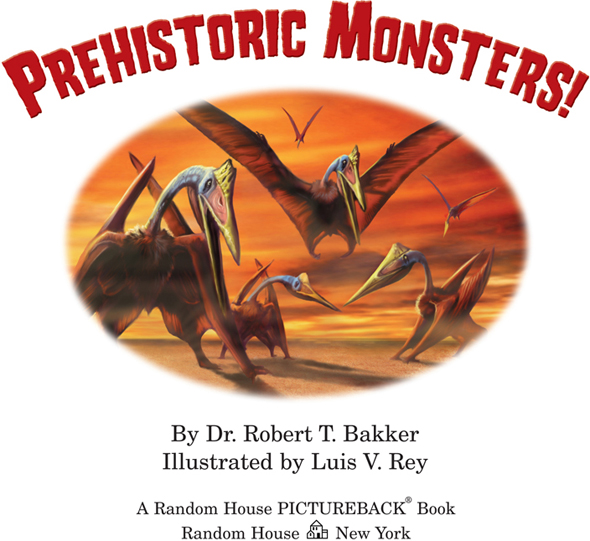
The author and editor would like to thank Dr. Steven Stanley, University of Hawaii, for his assistance in the preparation of this book.
Text copyright 2008 by Dr. Robert T. Bakker
Illustrations copyright 2008 by Luis V. Rey
All rights reserved. Published in the United States by Random House Childrens Books, a division of Random House, Inc., New York.
Pictureback, Random House and colophon, and Please Read to Me and colophon are registered trademarks of Random House, Inc.
Visit us on the Web! randomhouse.com/kids
Educators and librarians, for a variety of teaching tools, visit us at randomhouse.com/teachers
Library of Congress Cataloging-in-Publication Data
Bakker, Robert T.
Prehistoric monsters! / by Dr. Robert T. Bakker ; illustrated by Luis V. Rey. 1st ed.
p. cm. (A Random House pictureback book)
ISBN 978-0-375-83945-0 (trade)
ISBN 978-0-375-93945-7 (lib. bdg.)
ISBN: 978-0-307-98350-3 (eBook)
1. Vertebrates, FossilJuvenile literature. 2. PaleontologyJuvenile literature. I. Title.
QE842.B35 2008 566dc2 2007003400
v3.1
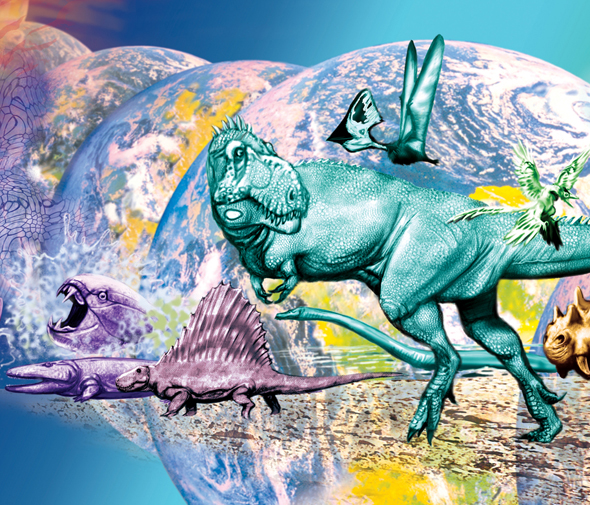
Im a paleontologist (pay-lee-uhn-TAH-luh-jist). I hunt fossilsburied remains of animals that lived long ago. Fossils tell us how the first life-forms changed into weird and spectacular creatures.

Prehistoric time is divided into eras. The first era was the Precambrian. It started over 3 billion years ago. There werent any animals at all during most of the Precambrian. And the only fossils come from simple seaweeds called algae.
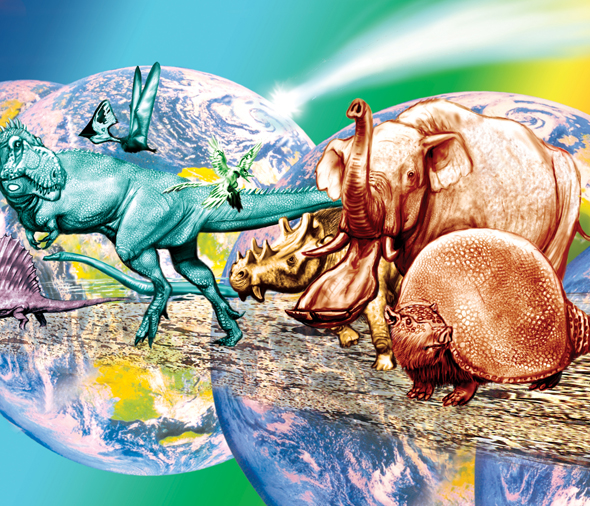
Then something wonderful happened.

The Paleozoic (pay-lee-uh-ZOH-ick) Era began about 540 million years ago. Suddenly the oceans were full of creatures with shells. The most common shelled critters had long feelers and bodies divided into three sectionstrilobites (TRY-luh-bites)! The name means three-sectioned animals.
Trilobites scurried around the sea bottom on little crab-like feet. They also swam and dug in the sand and mud.
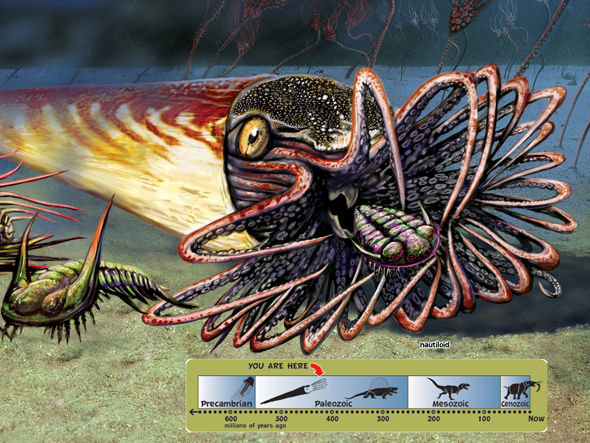
Trilobite shells were suits of armor put together with hinges. Most trilobites could curl up into a ball, the way some armadillos can. And many grew horns and spikes. Why? Because trilobites had enemiesthe nautiloidswho had tentacles for grabbing and jaws for crunching trilobite victims!
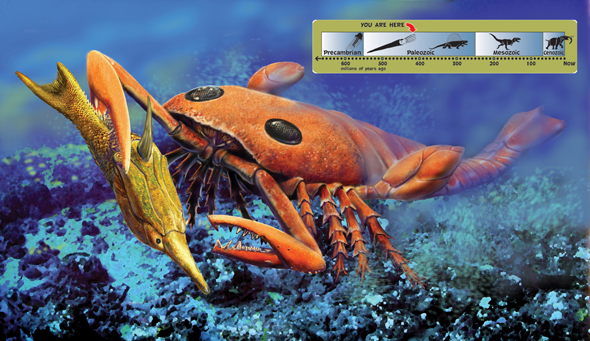
In the Middle Paleozoicabout 400 million years agoa new kind of monster predator appeared sea scorpions! They looked like todays land scorpions but lived in salt water and grew to twelve feet long.
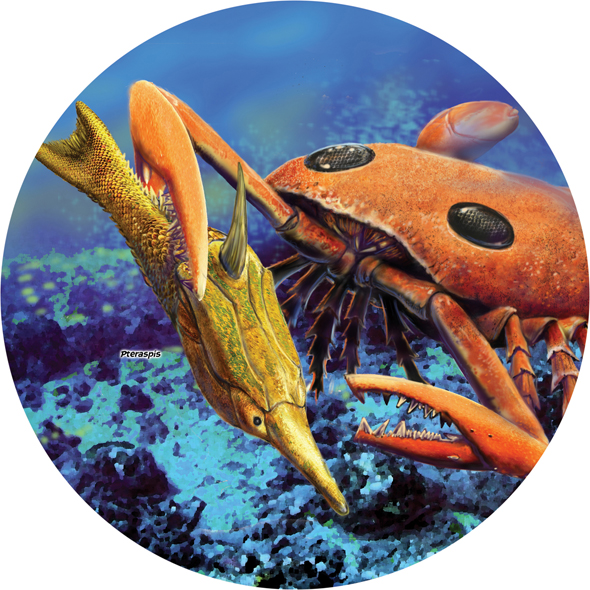
Sea scorpions didnt have stingers. Instead, they grabbed their victims with spiked pincers and chewed them up with strong jaws that worked sideways. Many fish had to grow thick armor to protect themselves.
The earliest fish were only a foot or two long. But thenabout 380 million years agosuper-sized armored fish as big as killer whales appeared! Gorgonichthys (gore-gun-ICK-theez) was one of the snap-headed sharks. They attacked with big fangs up front and slicing teeth in the back. Their teeth were self-sharpening and were like a pair of strong scissors.
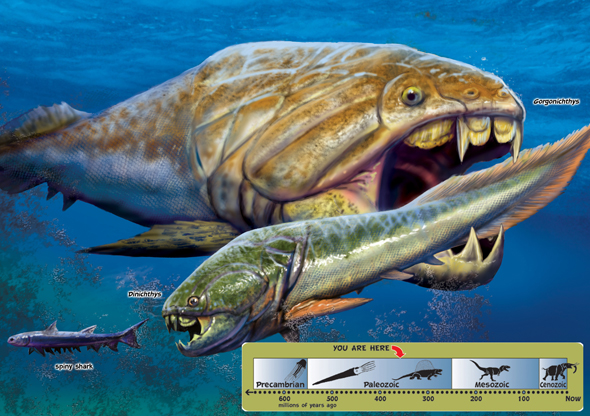
Gorgonichthys had a special joint that let its entire head snap down with startling speed and force. Gorgonichthys would open its mouth really wide, then kee-RUNCH!

Meanwhile, another kind of fish was doing something incredible! Over millions of years, the four fins of these fish changed into four legs, with toes for walking on land. These four-legged fish became amphibians, laying their eggs in water, frog-style. Anthracosaurus (an-THRACK-uh-sore-us) was an early amphibian as big as a crocodileand just as fierce.
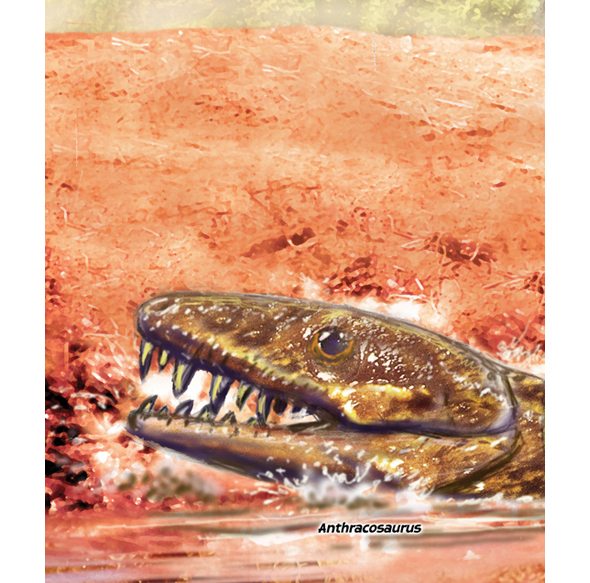
Amphibians couldnt go very far onto land because they needed water to breed. But then one type of amphibian changed in a very special way. It laid eggs on land, like a turtle, and became the first reptile. Now the reptiles could spread all over dry land. Dimetrodon (dy-MEH-truh-dahn) was a reptile that grew as big as a lion. It hunted plant-eating reptiles and big amphibians and swamp sharks with poison spines on their heads.
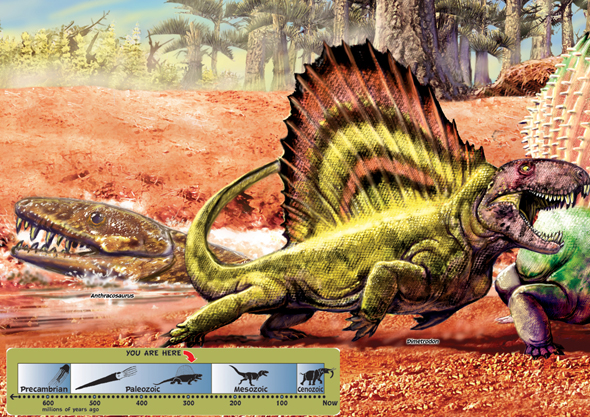
Dimetrodon and its kin had tall fins on their backs. The fins made the creatures look scarier. My crew is digging up Dimetrodon fossils right now in the red rocks of North Texas.
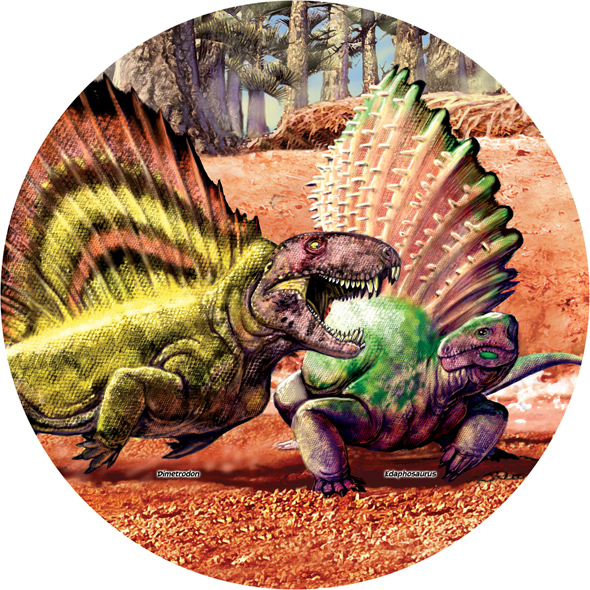
When the Paleozoic Era ended250 million years agothe Mesozoic (meh-zuh-ZOH-ick) Era began. Reptiles kept on changing and changing.
Some reptiles evolved into sea monsters. Giant four-flippered pliosaurs (PLY-uh-sorz) had heads ten feet long.
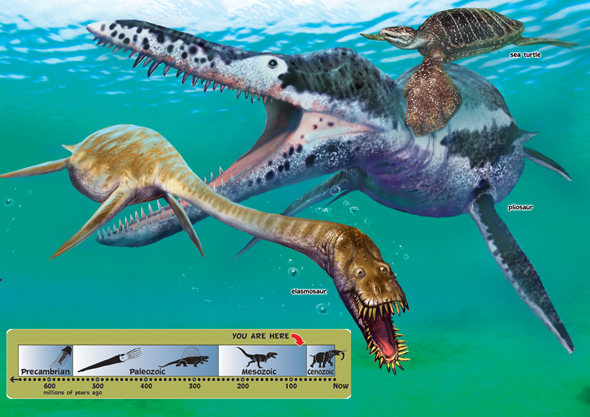
Ichthyosaurs (ICK-thee-uh-sorz), or fish-lizards, developed bodies shaped like fast-swimming sharks.
